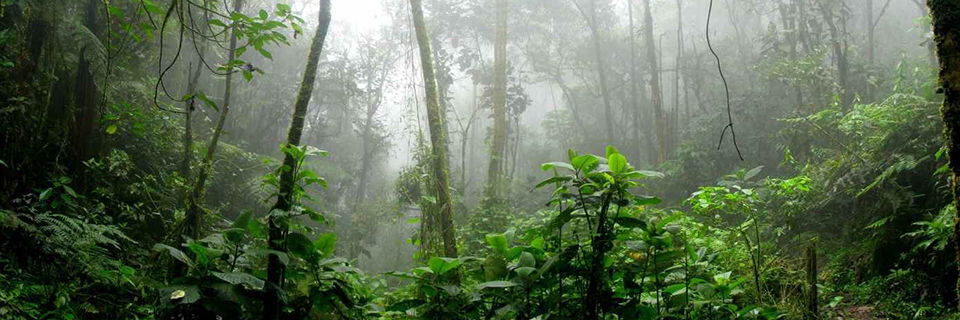
Human trafficking in the Amazon is inextricably linked with the fight to preserve the rainforest. It has become a hotbed of illegal activity as many seek to illegally exploit its valuable resources like lumber, gold, and exotic animals.
Illegal mining and logging are rampant in this remote region which provides a perfect breeding ground for human trafficking in the form of sex trafficking and forced labor. In 2010, the Brazilian government identified the Pará state, in the Amazon region, as having some of the highest numbers of sexual abuse cases in the nation, largely due to its remote location, desperate poverty, and lack of education.

Prostitution on the River
When logging of the Amazon rainforest became illegal, many people that live in the Amazon delta lost their livelihood, causing villages to descend into deep poverty. Without electricity, accessible roads, and other basic governmental services, the people of these villages came to rely on the boats that run up and down the Amazon river to bring in the supplies they so desperately need. Every day, villagers tie their small boats to the cargo ships and barges going by their villages so they can board and barter with the crew and passengers. They trade acai berries and other goods for food, clothes, and especially, diesel to run their generators. Too often, young girls come aboard to trade sex for these precious items. Young girls are encouraged by mothers and aunts to exchange sex for diesel so they can watch their favorite soap operas each night and escape the harshness of their lives for a few hours.
Sex Trafficking and Gold Mining
Sex trafficking is also prevalent in the illegal mining camps that have sprung up since gold was discovered in the Amazon. Brothels and bars surround these mining camps. Girls are lured there with promises of high-paying jobs as waitresses and cooks only to find themselves stuck in one of the most remote regions in the world with no way to get back home. A recent raid by Brazilian authorities found 69 women and 51 under-aged girls working in the tarp-covered bars and brothels of one of these camps. They discovered tiny rooms in the back of bars containing dirty mattresses on the floor, with only plastic sheeting separating the rooms from each other. The girls were servicing their customers in 10-minute time slots. Young girls are particularly sought after by the miners, who believe having sex with a virgin brings good luck.

Many of the 500,000 children who work as prostitutes in Brazil are later sold to the gold mines of the Amazon.
Brazilian Center for Childhood and Adolescence
Child Slavery and Forced Labor in the Amazon
Sex trafficking is not the only form of human slavery in the Amazon rainforest, there is also a very high number of victims caught in forced labor and child slavery in gold mines and illegal lumber camps. Many of the 500,000 children who work as prostitutes in Brazil are later sold to the gold mines of the Amazon. One raid of an illegal mine found workers, some of them children, being forced to endure degrading work conditions, including improvised housing with no bathrooms, contaminated drinking water, no protective gear, and no way to earn enough money to escape. Workers are intimidated by the armed gunmen that patrol these camps. Murder and violence are commonplace and rarely prosecuted. They found similar conditions in a 2010 raid of an illegal lumber company in which workers were rescued from slavery-like conditions. These logging camps and illegal mines are so remote and so well guarded that once a laborer is brought there, it becomes impossible for them to leave.
“If the end of the month comes and a lot is owed, they will send someone out to kill you. I’ve seen that happen. It’s better to pay three thousand for a gunman than five or six thousand to an employee,”
A rescued worker
How You Can Pray
This is the area that Life Impact is targeting for one of its next prevention projects in Brazil. When our founder, Lana Vasquez, visited this area of Brazil, her heart went out to the precious children of this region who are so at-risk and vulnerable to exploitation. Join us in praying for doors to open for Life Impact to come in and help the children in the Pará State of Brazil and the Amazon River Delta.
Resources
Brazil: Global Slavery Index. (2018.). Walk Free Foundation Retrieved March 17, 2021, from https://www.globalslaveryindex.org/2018/findings/country-studies/brazil/#:~:text=Prevalence,thousand%20people%20in%20the%20country.
Human trafficking’s dirty profits and huge costs. (2006.). InterAmerica Development Bank Retrieved March 19, 2021, from https://www.iadb.org/en/news/human-traffickings-dirty-profits-and-huge-costs
Nadia Shira Cohen, P., Vaidhyanathan, S., Petrusich, A., Bradley, R., Kolbe, L., & Alison, J. (2020.). River women of brazil. Retrieved March 17, 2021, from https://www.vqronline.org/articles/river-women-brazil
Persistence of slave labor exposes lawlessness of Amazon gold mines. (2021, March 04). Retrieved March 18, 2021, from https://news.mongabay.com/2021/03/persistence-of-slave-labor-exposes-lawlessness-of-amazon-gold-mines/
‘A silent crime’. (2018, November 09). Retrieved March 17, 2021, from https://www.washingtonpost.com/news/world/wp/2018/11/09/feature/deep-in-the-amazon-pushing-back-against-a-culture-of-sexual-abuse/
Slave labor in the Amazon: Risking lives to cut down the rainforest. (2017, March 13). Retrieved March 17, 2021, from https://news.mongabay.com/2017/03/slave-labor-in-the-amazon-risking-lives-to-cut-down-the-rainforest/

